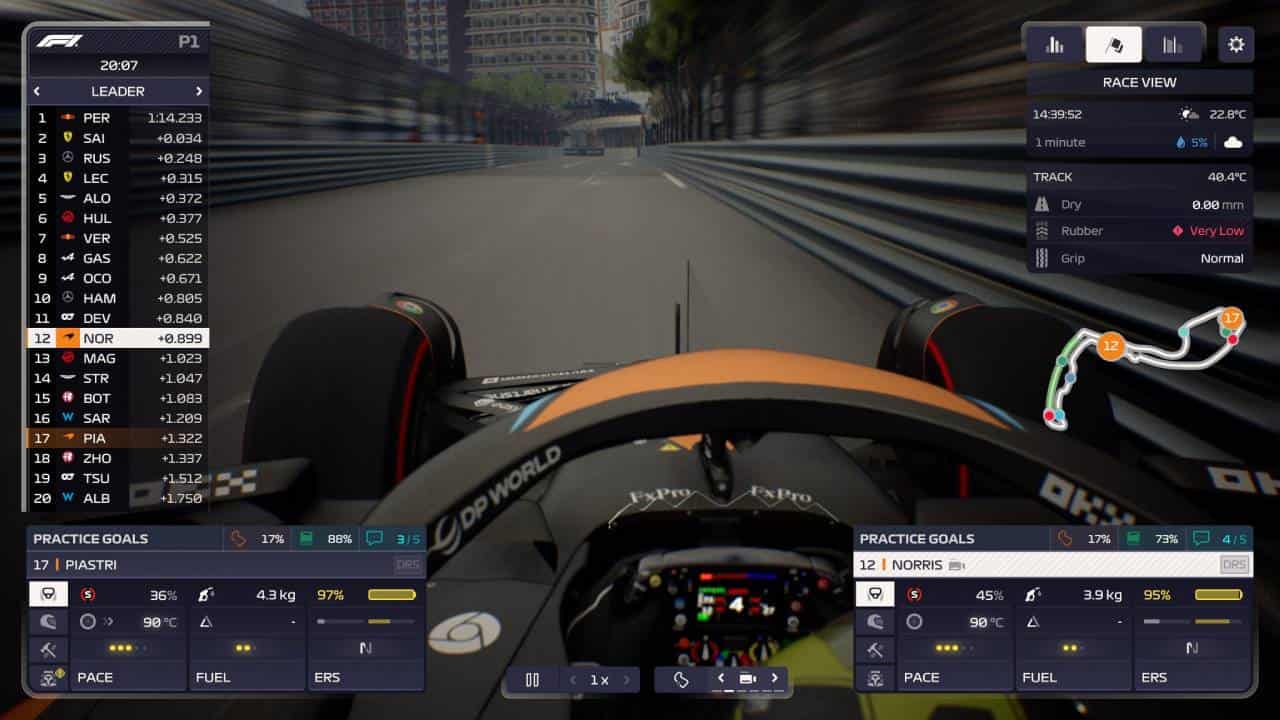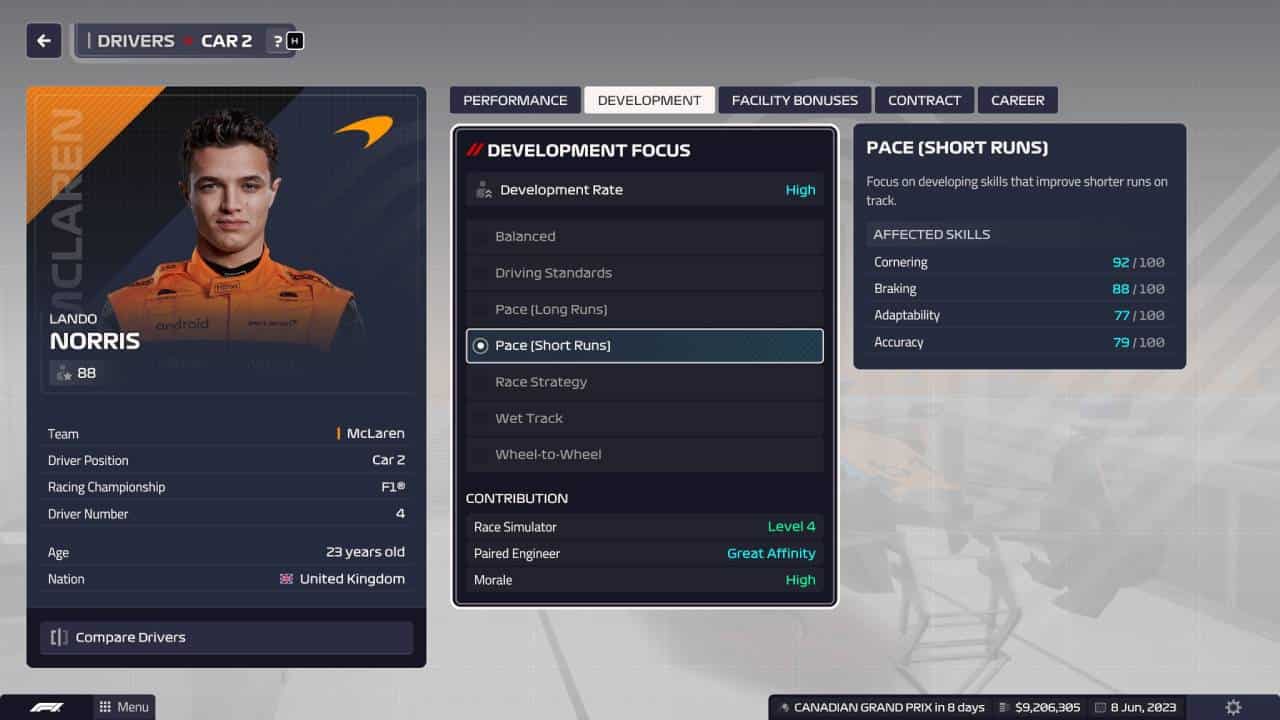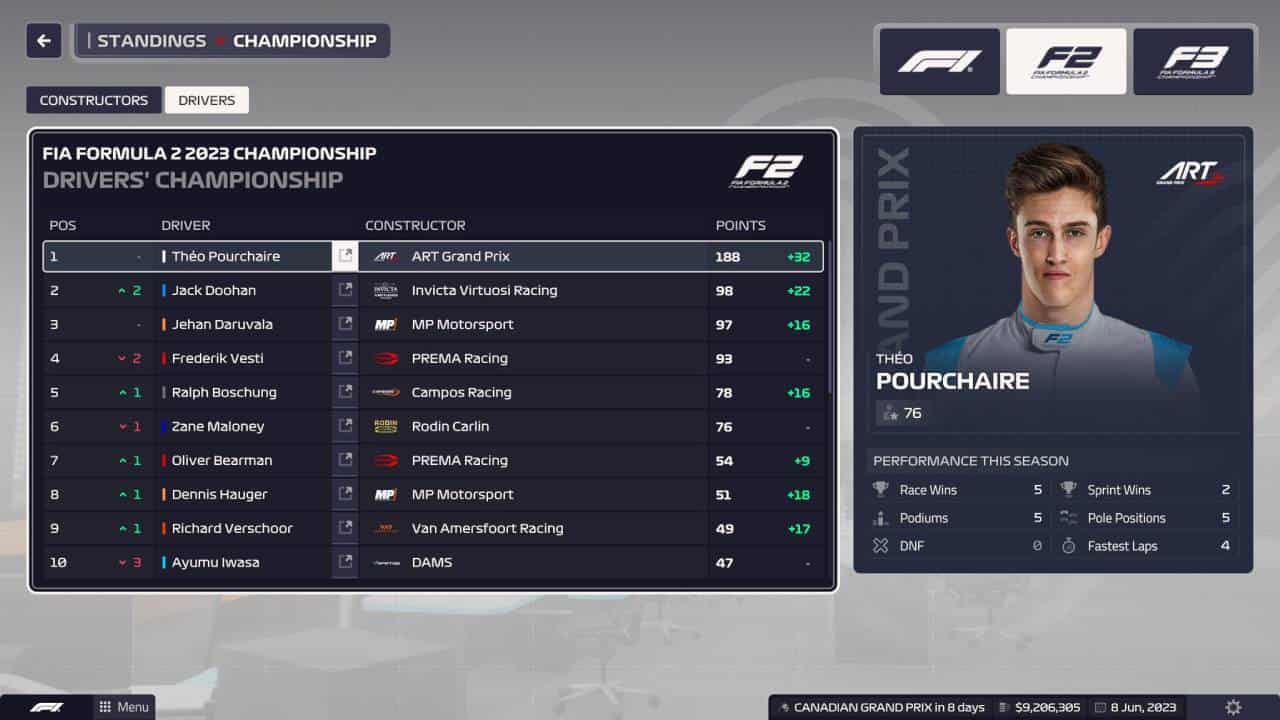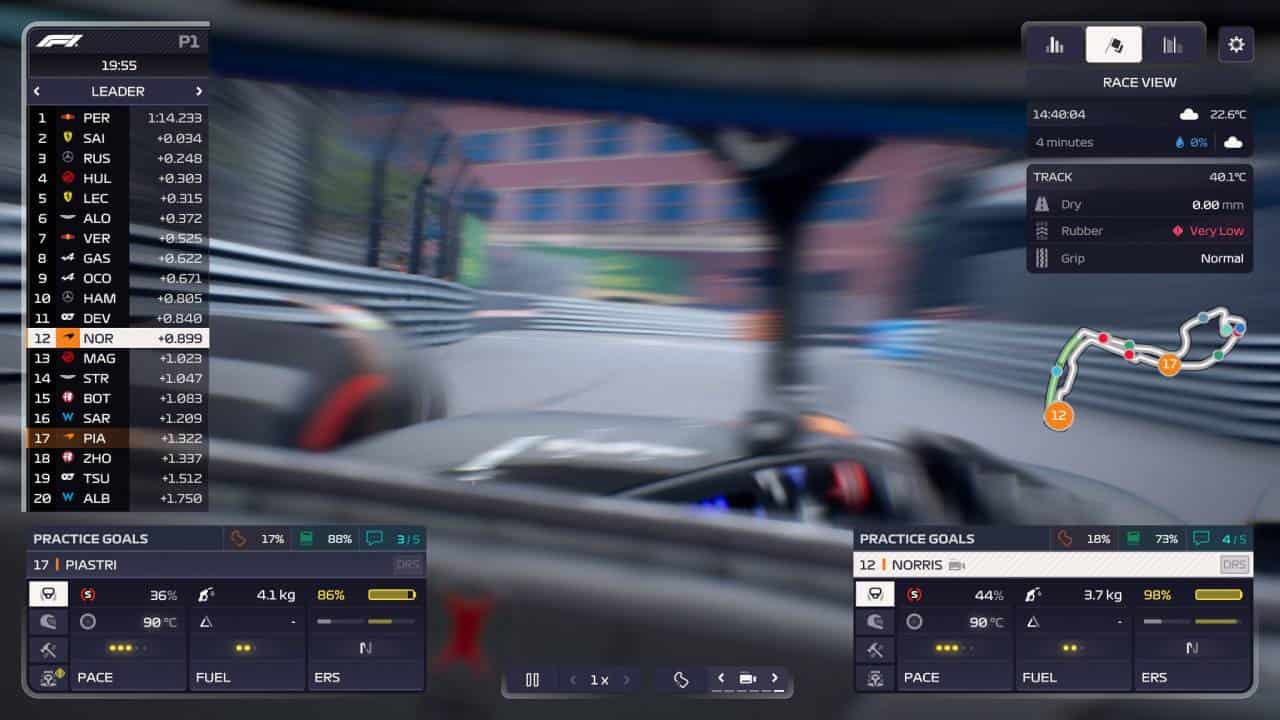Video Gamer is reader-supported. When you buy through links on our site, we may earn an affiliate commission. Prices subject to change. Learn more
The debut of the F1 Manager series last year brought a game with a lot of promise, but it was seriously rough around the edges. Graphically, it looked stunning for a management game where the closest benchmark is Football Manager with its PS1-era match engine graphics (though not for much longer!), but janky animations including scripted crashes always happening in the same places on each track detracted from the immersion. Our F1 Manager 2023 review covers how at first glance, this looks like the exact same game, but when you dive a little deeper, there’s a lot underneath the T-cam.
Without dwelling on the first instalment too much, it had a turbulent first few months as plenty of bugs and gameplay balancing issues left the community underwhelmed, such as wet and intermediate tyres lasting for 150+ laps, and tyre wear hardly making a difference to pace. These were gradually patched – but not before the developers announced it’d be dropping support of the game to focus on 2023, then backtracking on that decision due to understandable backlash. I’ve not had loads of time with F1 Manager 2023 – at the time of writing I’m up to Canada, which is 10 races, and approximately 15 hours including some time in the other new modes – but as far as I can tell, there aren’t any of these issues this time around.

Not launching with issues like that is only akin to not stalling on the grid when the lights go out, but it’s still important to hammer home that players who dropped off the last title for those reasons shouldn’t find reason this time around. There were also plenty of complaints that last year’s title could be gamed quite easily, resulting in easily making any team on the grid the best by the end of the first season if you knew the right car parts to invest in from the get-go. A suite of added depth features mean this shouldn’t be possible anymore – or if it is, it’s not quite as simple.
For one, the cost cap seems easier to reach this year. I say it seems, because 10 races in, I haven’t come close yet, but I have spent almost half of it already ($60m or so, with $80m remaining). Last year, reaching the cost cap (and receiving the penalties that come with breaching it) was almost impossible. You also must take into account the extra weight of car parts when designing them now, because having a heavy car doesn’t make for speed.
Drivers have sets of attributes, with three categories; Pace, Consistency, and Racecraft. There are three attributes within each category, and you can assign different development focuses to help a driver focus on which area of their racing to improve. Being in charge of McLaren (and seriously struggling to emulate their fantastic real life performance in the last few races) means I’ve got British prodigy Lando Norris to develop, and while his Control, Smoothness, and Cornering are all 90+, his Adaptability and Accuracy are both below 80. As a result, I have him developing his short run pace, which boosts both of those attributes, along with his Cornering and Braking. Meanwhile, Oscar Piastri isn’t quite as good as Lando, with only two skills above 80. I’ve left his development on balanced, which focuses on all nine attributes equally.

Your five staff members – technical chief, head of aerodynamics, sporting director, and two race engineers – are also included with development focuses, however their attributes are different from the drivers. Peter Bonnington doesn’t need a high cornering attribute, after all. It’s also worth noting that the older drivers are, the slower they develop, so you’re unlikely to improve Fernando Alonso or Lewis Hamilton much beyond the expertise they already have.
Speaking of staff, each month you must assign a schedule for your pit crew too. Choose from various presets such as pit stop errors, car building, and fatigue reduction, to help keep your well-trained squad in tip-top condition. Races can be won and lost with the speed of pit stops, so this is important to consider. While you can individually alter each day in the month with a specific regime, much like training in Football Manager, it’s highly likely to be the most mundane aspect that there is very little point in trying to min-max. Select your preferred preset and off you go.
One much-requested feature is the ability to control a team in the F2 or F3 feeder series and while that still isn’t a thing – much like Football Manager still won’t let you manage the under-21s – those feeder series are now fully simulated. This means you can follow the action after each race, and keep track of who is doing well, rather than just tracking the development of drivers you scout. Just don’t be surprised when Theo Pourchaire runs away with the F2 championship.

On the track, drivers have two new elements too – confidence and tactics. Driver confidence is something that adjusts automatically; if your driver performs a successful overtake or defends well, their confidence will improve, and it’ll decrease if they lose a position or are involved in an incident. A higher confidence leads drivers to perform better and make less mistakes, while lower confidence does the opposite, which can often be a vicious cycle. More experienced drivers will naturally have higher confidence too, and confidence heading into a race can be improved by performing well in practice and qualifying sessions.
Driver tactics are a little more hands-on, as you can tell your drivers how aggressive to be when overtaking and defending. I was a little too trigger happy with this at first, as I’d always try and push Piastri to overtake at every possible opportunity, which meant his lack of experience and skill led to more incidents, decreasing his confidence and costing me a bucket load in emergency car parts for the next race. You can also tell your drivers to not fight their teammate, avoid high kerbs, or drive in clean air, which is even more important with the more realistic tyre temperatures now as race pace is more severely affected.
One of the most repetitive elements of the first game was having to manually toggle ERS on and off on behalf of your driver, which isn’t quite realistic as in real life, the driver has full control over that. While you can still do this if you preferred it that way, you can now toggle the ERS Battle Assist button on, which means your driver will always keep enough energy in reserve to battle any other drivers and try to keep them out of DRS range, or vice versa to catch up. It’d definitely still be better if ERS usage was a skill drivers had though, and more experienced drivers were naturally better at deploying it.

Sprint races are finally a thing now, and there’s actually very little to say about them. They work exactly as expected, and can be a great opportunity to improve upon a poor qualifying session, and nab a few points. For those of you who like to watch at 1x or 2x speed, the visor cam mimics the recent addition on the real-life Sky Sports broadcast with the camera attached to the drivers’ helmets, although it does have an issue with draw distance and not being able to render the very end of a long straight.
Finally, we come to the Race Replay mode, which won’t take up anywhere near as much of your time but is certainly a noteworthy addition. It allows you to “rewrite the 2023 season”, with one challenge per real-life race, putting you in the shoes of a team that almost achieved something great but just missed by the skin of their teeth. For example, in Baku, you’ll control Aston Martin and try to get Alonso on the podium after the lap 11 safety car. Silverstone will see you fight to get both McLarens on the podium, while Jeddah tasks you with netting a single point for Tsunoda with just 15 laps left and Magnussen hot on his heels.
These are all replayable as much as you like, and you can also play the full race from lap one in charge of any team starting in the real-life grid order. Alternatively, there are exclusive scenarios that are completely fictional, but increase the difficulty, such as tackling the Canadian Grand Prix with two drivers with no confidence, or Mercedes at Brazil needing to manage their tyres and tactics for a 1-2 with Red Bull right behind them.
F1 Manager 2023 is a much, much better game than last year, and absolutely worth picking up whether you persevered with 2022 or not. It still has issues with certain janky animations, but there is a lot more diversity when it comes to incidents, and there is considerably more depth with both driver and car development. This is finally a management game worthy of the official F1 Manager title.

